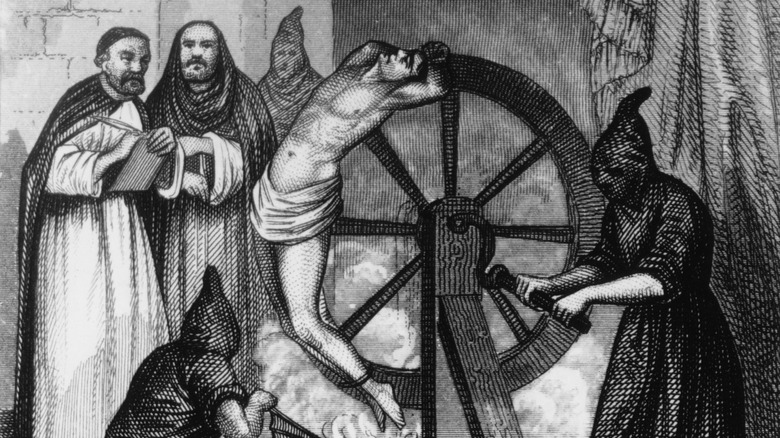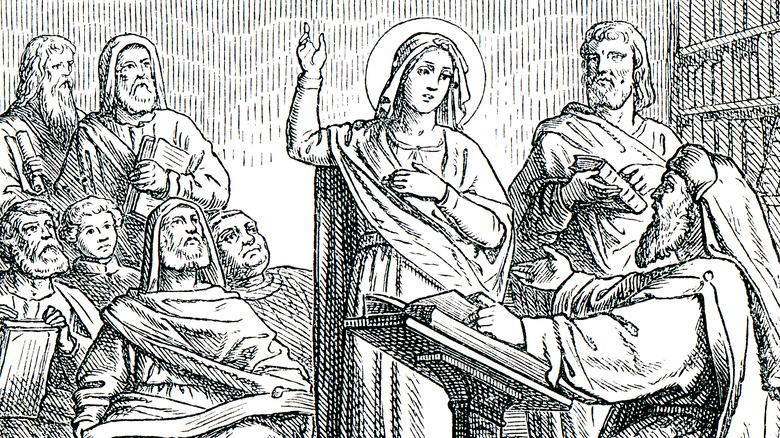How The Catherine Wheel Became A Dark Form Of Torture
Medieval criminal punishment was often the stuff of nightmares, with grueling and brutal sentences designed to inflict as much pain and misery onto the convicted as possible, often in full public view. Hangings, beheadings, blood eagles, scaphisms, and burning at the stake were all doled out to those deemed to have been done wrong, each with their own horrors in hopes of deterring any would-be criminals. One of the most common, and most brutal, execution methods was the Catherine Wheel, also known as the breaking wheel or simply the wheel.
According to Medieval Chronicles, the Catherine Wheel was used from antiquity to the early modern era. It was most popular during the medieval period, particularly in France and Germany, where it was one of the most widely used torture and execution devices, especially for those convicted of serious crimes such as theft and murder. While the exact methods differed from country and time period, all executions upon the wheel involved broken limbs and agonizing pain.
The wheel had many versions, all of them awful
Via History Collection, legend states that the wheel was first used on St. Catherine of Alexandria, who refused to give up her Christian faith in A.D. 305. Sixth century scholars recorded uses of the wheel, and it was used during the Roman Empire for those who had committed aggravated murder. Over the centuries, use became more widespread throughout Europe, with two main methods of torture. One was to be broken by the wheel itself, originally done by having the convicted lie down in the road while a wagon ran them over. This evolved to a single wheel that would break each limb and spine. The victim would then be woven into the spokes and left to die.
The other method wasn't much prettier. Criminals would be broken by the wheel, lashed to the spokes, and beaten with an iron cudgel. Sometimes the wheel was spun, so the area of impact from the cudgel was less predictable.
The extent of the torture was determined by the sentence. For crimes deemed lesser, the condemned would receive a couple of hits before being suffocated or killed instantly by a blow to the chest. This is where the term "coup de grâce," or mercy blow, originates. More heinous convictions meant a longer torture, where every limb was targeted, and the body was left to die in public, either from exposure, dehydration, shock, or animal attacks. As Europe moved into the modern age, the Catherine Wheel was deemed too graphic a punishment, and hanging and firing squads became the preferred methods of execution.

